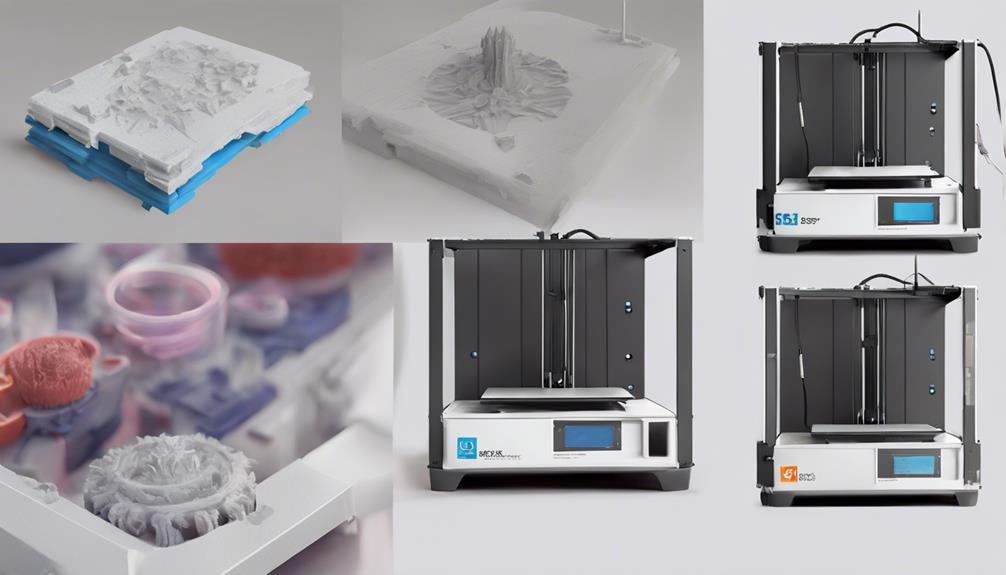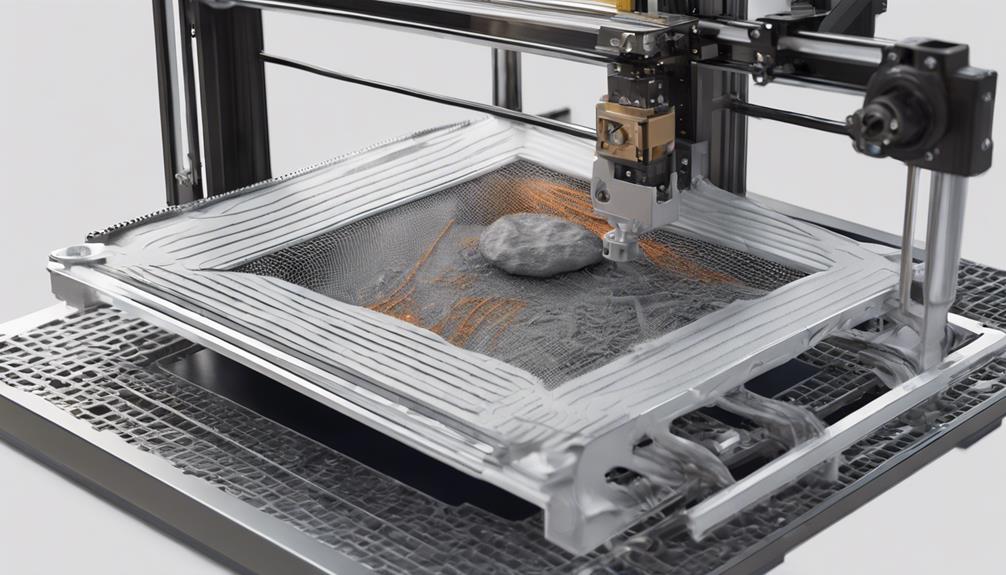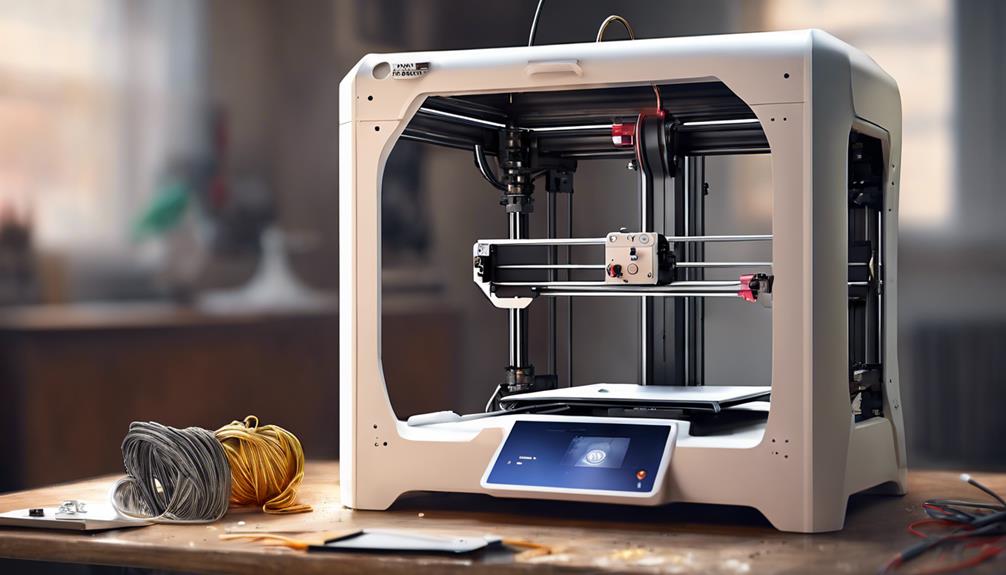If you're aiming to enhance your 3D printing skills, focusing on bed leveling is a game-changer. But, did you know there's more to boosting your prints than just that? Exploring advanced techniques and troubleshooting common issues can take your creations to the next level. Stay tuned to uncover the secrets that can transform your 3D printing journey from average to exceptional.
Bed Leveling Importance

Ensuring proper bed leveling in 3D printing is essential for achieving high-quality prints with consistent first layers. When your bed isn't leveled correctly, it can lead to issues like adhesion problems, warping, or inconsistent layer heights, affecting the overall print quality.
To guarantee a successful printing process, start by adjusting the bed's corners to match the nozzle's height. Use a piece of paper to test the nozzle's distance from the bed, ensuring a slight friction when moving the paper underneath.
Troubleshooting and Solutions
To address common bed leveling issues effectively, troubleshoot and implement solutions for best 3D printing results.
Start by ensuring the printer is on a stable surface and the bed is clean. Check for any loose bed screws, wobbly bed movement, or misaligned Z-axis.
If the first layer isn't adhering properly, adjust the bed leveling knobs while the nozzle moves around. Use the paper method to set the correct distance between the nozzle and bed.
If there are still issues, consider upgrading to a glass bed for better flatness. Regular maintenance and attention to bed leveling details will greatly improve print quality and success rates.
Advanced Leveling Techniques

For advanced leveling techniques in 3D printing, consider implementing manual mesh bed leveling for precise control over the printing surface. This technique allows you to adjust the bed at multiple points, compensating for any inconsistencies in the bed's flatness.
Start by setting up a mesh bed leveling system in your printer firmware, then run the leveling process to create a detailed map of the bed's surface. By following the instructions to adjust the leveling screws or knobs according to the mesh data, you can achieve a more accurate and uniform first layer across the entire printing area.
Manual mesh bed leveling is a powerful tool for fine-tuning your printer's performance and ensuring high-quality prints.
Addressing Common Bed Issues
Address issues that may arise with your 3D printer bed by implementing effective troubleshooting techniques. Common problems like bed warping, Z-axis misalignment, or loose screws can hinder proper bed leveling.
To combat bed warping, consider using fixes like glass beds or shimming techniques. Ensuring the bed is flat and adjusting the printing area are vital for successful prints.
Utilize the troubleshooting guide to identify and resolve issues promptly. Remember to check for X-axis sag or wobbly bed conditions that can impact the overall print quality.
Enhancing Your Printing Experience

Enhancing your 3D printing experience involves optimizing bed leveling techniques for improved print quality and efficiency.
Consider upgrading to a glass bed for a flat surface, adjusting the Z offset to achieve better adhesion.
Installing a bed leveling sensor like BLTouch can automate the process, enhancing precision.
Upgrading springs and using tailored Cura profiles for your Ender 3 can streamline the bed leveling process.
Start leveling from the corners towards the center for better results.
These enhancements not only improve print quality but also make the bed leveling process easier and more efficient, ensuring a smoother overall printing experience.
Frequently Asked Questions
Can a Warped Bed Affect Bed Leveling Accuracy?
A warped bed can definitely affect bed leveling accuracy. It creates challenges in maintaining a consistent distance between the nozzle and bed, impacting your prints. Addressing bed warping issues is essential for achieving precise and successful bed leveling.
How Do I Adjust for Nozzle Clogs During Bed Leveling?
When checking for nozzle clogs during bed leveling, make sure the nozzle is clear before starting. Check for obstructions or filament residue. Cleaning the nozzle prevents inconsistencies in printing. Always address clogs promptly to maintain smooth printing.
Is Manual Mesh Bed Leveling Suitable for Beginners?
Yes, manual mesh bed leveling can be suitable for beginners. It offers precise control over adjustments for accurate leveling. Start with the basics, like preheating the bed and using the paper method, then progress to fine-tuning each corner.
What Are the Best Springs for Ender 3 Bed Leveling?
For the best springs to level your Ender 3 bed effectively, opt for stiffer silicon or yellow die springs. These upgrades can provide better stability and consistency, enhancing your 3D printing experience with improved bed leveling results.
Can I Use a PEI Sheet Instead of a Glass Bed for Leveling?
Yes, you can use a PEI sheet instead of a glass bed for leveling. PEI sheets offer good adhesion properties, but make sure to adjust your Z offset accordingly. Experiment and fine-tune settings for best results in your printing process.
Conclusion
As you level up your 3D printing game, remember that proper bed leveling is key to success. By troubleshooting common issues, implementing advanced techniques, and enhancing your overall experience, you can achieve high-quality prints consistently.
Coincidentally, mastering bed leveling not only improves adhesion and prevents warping, but also guarantees precise layer heights for excellent results. Keep leveling up and watch your prints reach new heights!